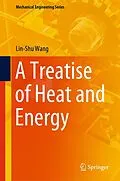- Brings forth students' understanding of how heat and work are different and why the principle of their inter-convertibility (i.e., exchangeability) should be rejected;
- Elucidates the constructive role of entropy growth, and the notion that energy matters, but entropy growth matters more;
- Demonstrates that heat can be transferred, produced, and extracted;
- Teaches readers that all reversible-like processes are heat extraction processes and how this understanding will revolutionize the design of future buildings.
Autorentext
Professor Lin-Shu Wang is Associate Professor of Mechanical Engineering at the State University of New York at Stony Brook. A lifelong student of thermodynamics and philosophy of science, Dr. Wang has taught courses in engineering thermodynamics for decades and is the inventor of the "Turbo-Cool turbocharging system", "hybrid solar panels", and "reverse-cycle ductless heat pumps for zoned heating and cooling," technologies that, respectively, improve engine energy efficiency and vehicle fuel economy, increase the supply of power and heat from solar energy conversion, and reduce the energy demand for building heating and cooling. He earned his PhD at the University of California, Berkeley.
Inhalt
Introduction: Temperature (the measurement of the degree of heat) and some comment on work.- Calorimetry and the caloric theory of heat: the measurement of heat.- The first law: the production of heat and the principle of conservation of energy.- Carnot's theory of heat, and Kelvin's adoption of which in terms of energy.- Entropy and the entropy principle.- Reversible processes versus quasi-static processes, and the condition of internal reversibility.- Free energy, exergy, and energy.- The second law: the entropy growth potential principle and the three-place relation in heat phenomena.- Applications to special states of thermodynamic equilibrium: Gibbsian thermodynamics for physical and chemical applications.- A theory of heat as a prelude to engineering thermodynamics.
